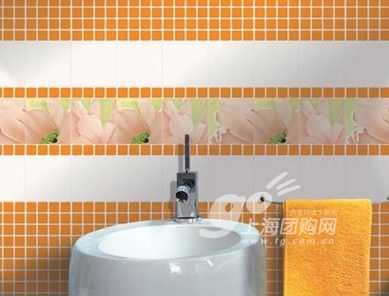The simplest on-site inspection method for home tiles

Brand Shop: Smic Tiles
The simplest on-site detection method for home tiles is:
1. Spread more than four products in the same direction as the bottom of the trademark on the flat sand surface, set an expansion gap, to see whether the four sides of the junction is smooth and no obvious "kicking" phenomenon.
2. Use a ruler that is greater than or equal to the length of the side of the brick and place it directly 5 mm from the edge of the tile. Use an appropriate feeler, from a large value to a small value, into the gap between the ruler and the brick surface. The deformation value is the deformation value of the product.
3. It is not correct to place two products face to face to observe and measure the flatness; it is also not correct to use the eye to visualize, or to use two bricks to rotate on a flat ground or table. The commonly used detection method is to use a ruler to detect.
4. A simple method to detect the deformation of the tiles: Two people use the two deformed tiles by hand, and use bricks to butt the tiles to see if they are flush. If there is a large difference in the deformation of the two bricks, use 1 method to test, if you want to know whether the product's deformation value exceeds the standard, then use 2 methods to detect.
5. According to the requirements of different types of products, clearances must be reserved when trial products are placed. In particular, the characteristics of products such as antique tiles, elegant sandstone, and natural surfaces determine that a gap of 5 to 15 mm must be reserved when paving.
Links: The best selling tiles in the group recommended to create civilian luxury
Tiles Buy Antique Tiles
HFCs (hydrofluorocarbons) are the third
generation of fluorine-based gases.
These products are categorised as having zero ODP (Ozone Depleting Potential)
and medium to high GWP (Global Warming Potential) and so offer a more
environmentally friendly alternative to CFCs and HCFCs.
HFCs are used in a wide range of refrigeration and air conditioning equipment
specifically designed for them, and as "drop
in" retrofit gases for older CFC or HCFC equipment. HFCs are also
used in selective propellant and foam blowing
applications.
A growing focus on the environmental
impact of refrigerants is fuelling demand for refrigeration solutions
that can provide satisfactory cooling performance with a lower impact on global
warming. This is propelling environmentally friendly refrigeration solutions to
the top of the corporate sustainability agenda. In addition, local legislation
is increasingly targeting refrigerant gases with high GWP.
Zhejiang Zhonglan Refrigerants Co.,Ltd offers a number of lower GWP HFC solutions, such as R134a, R404a, R406a, R407c, R410a, R507,R417a,R422d,R125,R32, etc. For new equipment purchases, we also supply a wide range of HFC alternatives. These include HC(natural refrigerants), which provide a viable, lower GWP alternative to HFCs.
HFC Refrigerant Blends,Freon Refrigeration,Blend Refrigerant Gas,Mixed Refrigerant Gas
ZHEJIANG ZHONGLAN REFRIGERATION TECHNOLOGY CO.,LTD , http://www.uiszl.com
